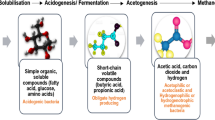Abstract
The meat processing industry is believed to produce highly polluted wastewater. Analysis of such wastewater indicated that the waste was highly contaminated with organic compounds as indicated by COD (1544mgO2l−1), BOD (646mgO2l−1), and TSS (1155 mgl−1). Moreover, oil and grease concentrations reached 144mgl−1 treatment of raw wastewater using Upflow Anaerobic Sludge Blanket (UASB) followed by Rotating Biological Contactors (RBC) was studied. Efficiency of the UASB for the removal of CODtotal, BODtotal, TSS, and oil and grease was 56%, 56%, 85%, and 58%, respectively. The quality of the UASB effluent barely complies with the regulatory standards for discharging wastewater into the sewerage network. UASB effluent was subjected for further treatment using a RBC unit to improve the quality of the treated effluent for reuse in irrigation purposes. Residual COD, BOD, TSS, and oil and grease, following RBC, was 132mgO2l−1, 40mgO2l−1, 44mgl−1, and 10mgl−1 respectively. The overall efficiency of the treatment units provided good quality effluent. The overall percentage removal of COD, BOD, TSS, and oil and grease was 91.5%, 94%, 96%, and 91%, respectively. Based on the quality of the treated effluent and guidelines recommended for wastewater reuse, it may be concluded that a slight to moderate restricted irrigation is applicable to reuse the treated effluent in the green belt around the factory. Disinfection should be applied to ensure the safety of such a process.
Similar content being viewed by others
References
APHA, AWWA, WPCF. (1992) Standard Methods for the Examination of Water and Wastewater. 18th edn., Washington.
Boardman, G.D., Tisinger, J.L. and Gallagher, D.L. (1995). Treatment of clam processing wastewaters by means of upflow anaerobic sludge blanket technology. Water Research, 29, 1483-1490.
Collivignarelli, C., Urbini, G., Fameti, A., Bassetti, A. and Barbaresi, U. (1990) Anaerobic — aerobic treatment of municipal wastewater with full-scale UASB and attached biofilm reactors. Water Sci. Tech, 22(1/2) 475-82.
Housley, J.N. and Zoutberg, G.R. (1994). Application of the biothane wastewater treatment system in the soft drinks industry. J. Inst. Water. Environ. Manage, 8, (3) 239-245.
Lettinga, G.A. de M., Van der Last, A.R.M., Wiegant, W., Van Knippenberg, K., Frijns, J. and Van Buuren, J.C.L.(1992) Anaerobic treatment of domestic sewage and wastewater.1st Middle East Conference in “Water Supply and Sanitation for Rural Areas”, Cairo, Egypt, pp. 164-170.
Speece, R.E. (1983) Anaerobic biotechnology for industrial wastewater treatment. Environ. Sci. Technol., 415A-427A, (17) 9.
Von-Hagel, G. (1988) Synergistic approach to physical-chemical wastewater pretreatment in the Food Industry. Pretreatment in chemical water and wastewater treatment. pp. 151-158 Springer-Verlag. New York.
Yoda, M., Hattori, M. and Miyaji, Y. (1985) Treatment of municipal wastewater by anaraobic fluidize bed: behaviour of organic suspended solids in anaerobic reactor. In: Proceeding of the Seminar/Workshop Anaerobic Treatment of Sewage, M.J.S. Switzenbaum (ed). 27-29 June, University of Massachusetts at Amherst, pp. 161-196.
Author information
Authors and Affiliations
Rights and permissions
About this article
Cite this article
Wahaab, R.A., El-awady, M.H. Anaerobic/aerobic treatment of meat processing wastewater. The Environmentalist 19, 61–65 (1999). https://doi.org/10.1023/A:1006545124818
Issue Date:
DOI: https://doi.org/10.1023/A:1006545124818




